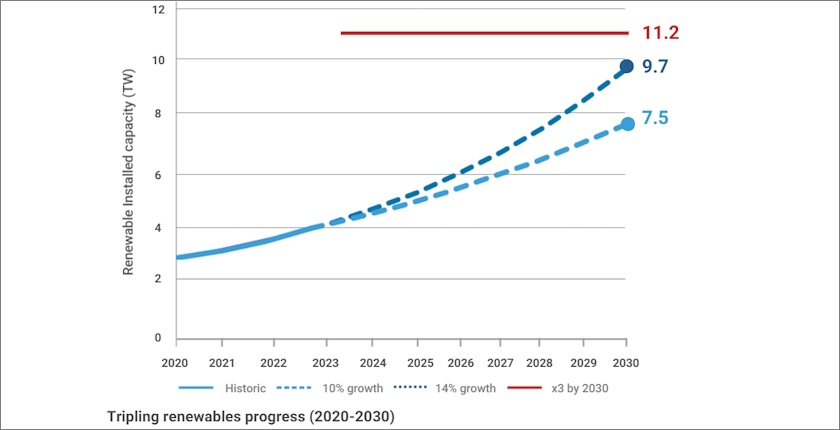
Photo: iStock
Renewable electricity capacity in the world grew 14% last year, according to IRENA’s updated statistical yearbook. The organization stressed that a 16.4% rate is necessary to increase the total by three times by 2030. Its Director-General Francesco La Camera warned of ongoing patterns of concentration in geography.
The International Renewable Energy Agency (IRENA) released its official statistical report for 2023 after adding production data through 2022 as well as renewable energy balances and investments. Total capacity for last year has been revised insignificantly downward from the preliminary release, by 5.2 GW to 3,865 GW. The changes are in hydropower and bioenergy. IRENA’s Director-General Francesco La Camera warned against complacency.
At the end of 2023, renewables accounted for 3.9 TW or 43% of the global total. Solar energy led within the segment with 36.7% or 1.42 TW, followed by hydropower (32.7%), wind (26.3%), bioenergy (3.9%) and traces of geothermal and marine energy.
La Camera: Current growth rate leads to failure
Despite renewables becoming the fastest-growing source of power, the world risks missing the tripling renewables target pledged at COP28. To stay the course, the renewables capacity must grow at a minimum 16.4% rate annually through 2030, according to IRENA. The goal is 11.17 TW.
Combined with the constant decreasing additions of non-renewable capacity, the trend sees renewable energy on its way to overtake fossil fuels in the global total. But maintaining the 14% rate would miss the goal by 1.5 TW or 13.5% in 2030.

“Renewable energy has been increasingly outperforming fossil fuels, but it is not the time to be complacent. Renewables must grow at higher speed and scale. Our new report sheds light on the direction of travel; if we continue with the current growth rate, we will only face failure in reaching the tripling renewables target agreed in the UAE Consensus at COP28, consequently risking the goals of the Paris Agreement and 2030 Agenda for Sustainable Development.” La Camera said.
Consolidated global figures conceal ongoing patterns of concentration in geography, he pointed out. They threaten to exacerbate the decarbonization divide and pose a significant barrier to achieving the tripling target, La Camera added.

China accounts for almost two thirds of global wind, photovoltaics under construction
In particular, China has 180 GW of utility-scale solar power and 159 GW of wind power already under construction, according to new data from Global Energy Monitor. The total of the two is nearly twice as much as the rest of the world combined, and enough to power all of South Korea.
The United States is next, with just 40 GW. The rest of the top five are Brazil (13 GW), the United Kingdom (10 GW) and Spain (9 GW).
IRENA called for collaboration between governments, the private sector, multilateral organizations and civil society. Governments need to set explicit renewable energy targets, look at actions like accelerating permitting and expanding grid connections, implement smart policies that push industries to step up and incentivize the private sector to invest, it stressed.


















Be the first one to comment on this article.